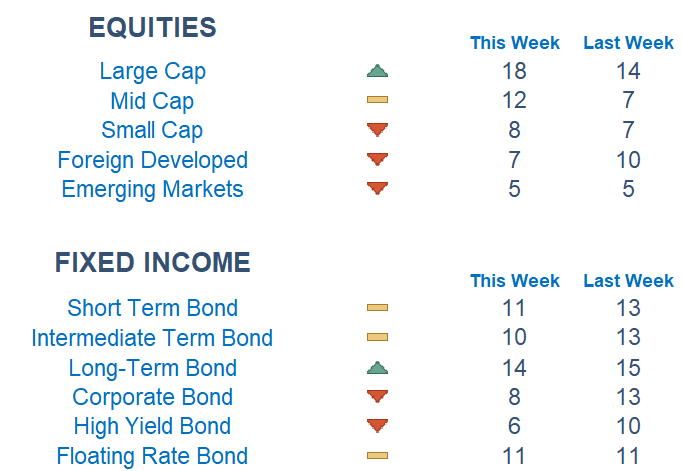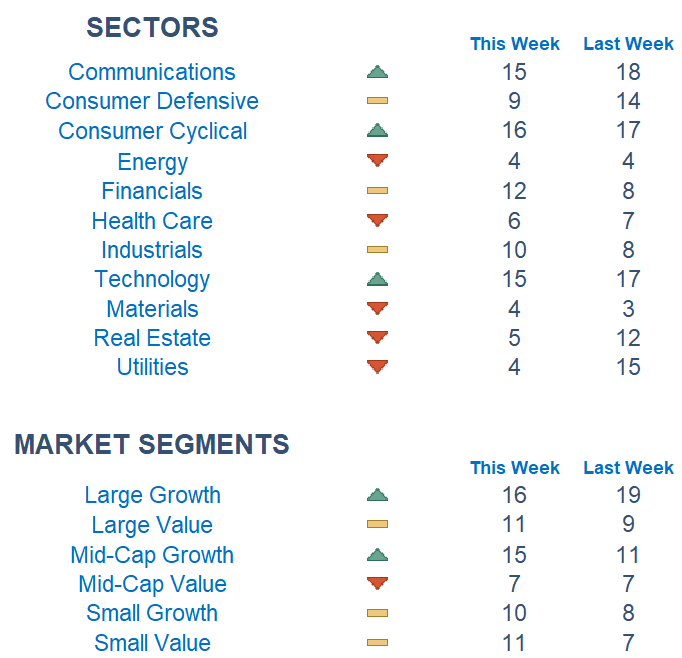Our model readings are improving from last week after optimism grew rapidly on debt ceiling talks.

This Week on Wall Street - Week of May 22nd
Market Commentary
Our model readings are improving from last week after optimism grew rapidly on debt ceiling talks. Mega caps continued their dominance while breadth remained steady. We are right near the 4,200 resistance level on the index and the theme in the overall market remains the same; large caps over small caps and growth over value.
Debt Ceiling: There is some more optimism on negotiations as Joe Biden and Speaker McCarthy are scheduled to meet today after the two had a "productive" call yesterday. These talks come after Republicans had a temporary walkout on Friday, sending markets lower. Click here for more.
Fed speak continued into this morning as St. Louis Fed President Bullard sent short-term yields moving higher after saying he is thinking of two more rate hikes this year. The Fed will get an inflation reading from their preferred PCE gauge this week.
Among sectors, the story hasn't changed as we are seeing strength out of a few sectors like Technology, Communications, and Consumer Cyclical. At the bottom of the pile are Utilities, Energy, Materials, Real Estate, and Health Care. Picking names with relative strength within sectors has remained the dominant and most effective strategy.

What is Newton?
r Newton model attempts to determine the highest probability of future price direction by using advanced algorithmic and high-order mathematical techniques on the current market environment to identify trends in underlying security prices. The Newton model scores securities over multiple time periods on a scale of 0-20 with 0 being the worst and 20 being the best possible score. Trend & level both matter.

Economic Releases This Week
Monday: None
Tuesday: S&P Flash US Services & Manufacturing PMIs, New Home Sales
Wednesday: FOMC Minutes
Thursday: Initial & Continuing Jobless Claims
Friday: Durable Goods, PCE Index, Consumer Sentiment

Technical trading models are mathematically driven based upon historical data and trends of domestic and foreign market trading activity, including various industry and sector trading statistics within such markets. Technical trading models, through mathematical algorithms, attempt to identify when markets are likely to increase or decrease and identify appropriate entry and exit points. The primary risk of technical trading models is that historical trends and past performance cannot predict future trends and there is no assurance that the mathematical algorithms employed are designed properly, updated with new data, and can accurately predict future market, industry and sector performance.
